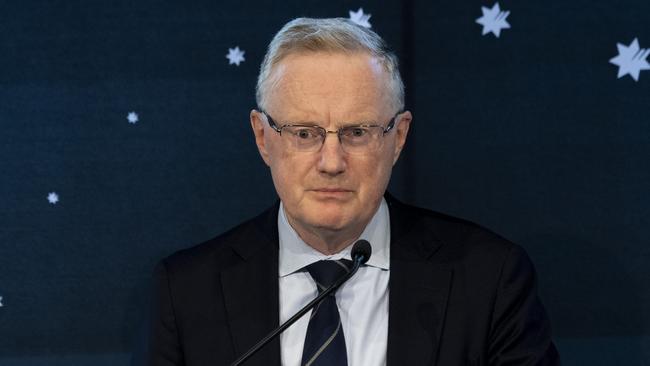
Sure, it was a full-blown crisis, which elicited unconventional policy and talk therapy by central banks the world over, but the RBA governor ended up peddling a kind of populist fiction by being time-specific about a prediction that is usually hinted at or veiled by banker speak.
“In late 2020 and for much of 2021, the board indicated that the first interest rate increase was not expected for ‘at least three years’, and then not until ‘2024 or later’,” the RBA’s review said.
Now some people may have thought Lowe had provided a guarantee about interest rates not rising for several years.
He did no such thing, but now concedes it took on the guise of a “promise”.
In the shorthand of media commentary and hard-selling by real estate agents and some lenders, the vibe may certainly have been “you can borrow to the max” and have a few years’ breathing space before mortgage rates rise.
The smart players with billions at stake knew his words were more nuanced, that they were part of this quirky thing called “yield curve control”.
What Lowe meant was that inflation had been comatose for a long time because wage growth had been moribund and that was unlikely to change, even as the jobless rate tumbled.
In the end, financial markets did not believe Lowe about yield curve control, which was pegging the three-year bond rate to the 0.1 per cent cash rate to lower borrowing costs.
Prices got out of whack in a silly way on that front, leading to confusion, volatility and big losses in the market for some.
In its review of that approach in June, the RBA conceded it had suffered “some reputational damage” from its “disorderly” retreat last November.
Like its peers, the RBA was caught out by the resurgence in inflation earlier this year stoked by fiscal overkill and the pandemic’s supply snarls; by the time central banks started raising their policy rates, in May here, the horse had bolted.
We know from the RBA’s analysis there are low-income homeowners who’ll be feeling the double pain from rising borrowing costs and falling home values.
To do its job properly, the central bank needs to have impeccable communications to help smooth the operation of its very blunt policy tools.
Lowe and his most senior colleagues are using public diplomacy to send a signal that they’ll do “what is necessary” to defeat inflation.
The headline inflation rate will soon be close to 8 per cent and it’s vital that the community’s psychology and the behaviour of businesses does not warm to the idea higher prices are just the beginning.
The RBA has lost some of its shine as an institution and its operating conditions are being scrutinised in a public inquiry.
Right now, Lowe has many critics, few vocal friends and a very difficult task in pulling off a “soft landing” amid all the global and local uncertainty.
Former treasurer Peter Costello, architect of the RBA’s independence, said the miss on inflation was “the worst failure in monetary policy since the 1990s”, and it would have to raise interest rates faster and further than would otherwise be the case.
Costello said that in June, after the second increase, when the cash-rate target was 0.85 per cent. It’s now 2.85 per cent and expected to be 3.1 per cent after next month’s meeting.
The bank is now more open and emotionally available than it once was.
The review into forward guidance is filled with caveats, excuses and hindsight wisdom.
It may also signal progress. The episode will become etched into corporate memory: “considerable reputational damage” was done.
Yet like the coming pain for the mortgage belt of the seven consecutive turns in the interest-rate dial, the RBA has not yet experienced the full force of the hurt from its sloppy guidance.




Philip Lowe will never live down the botched forward guidance he provided about a near-zero cash rate lasting until 2024.